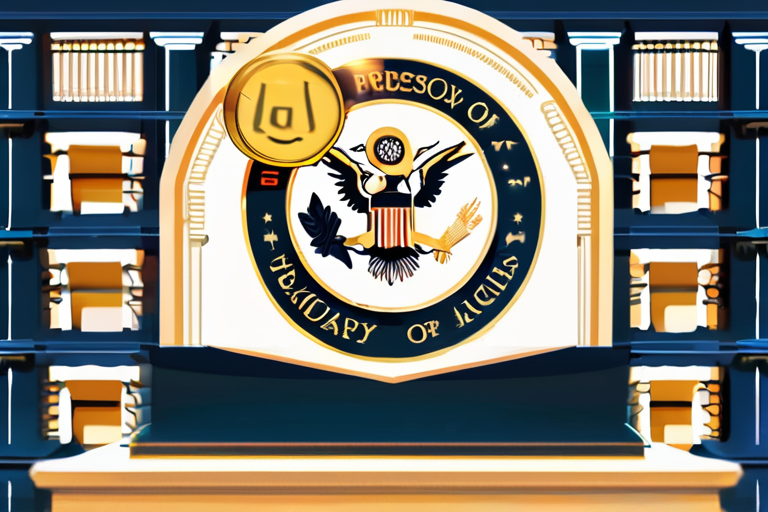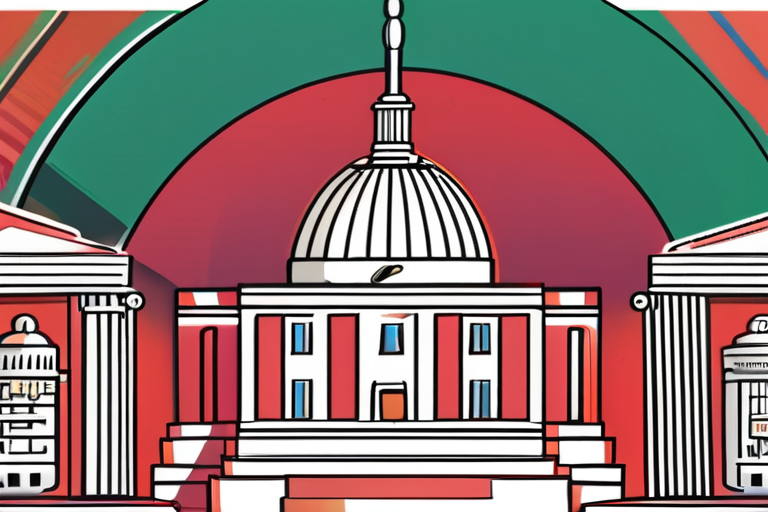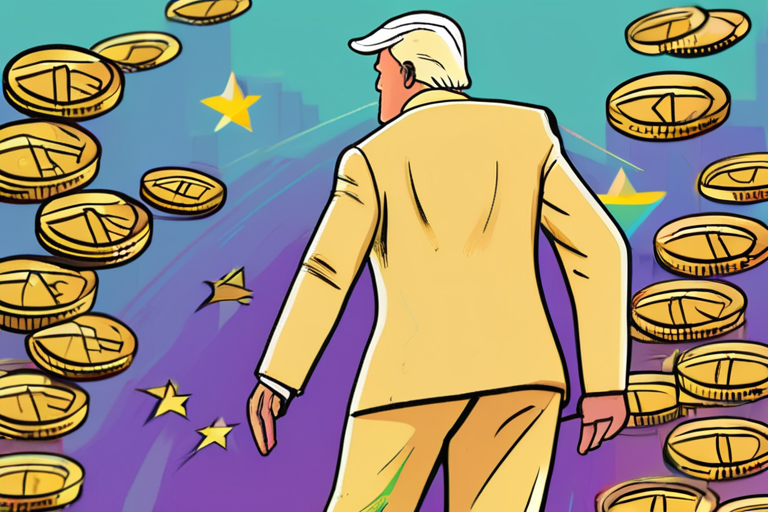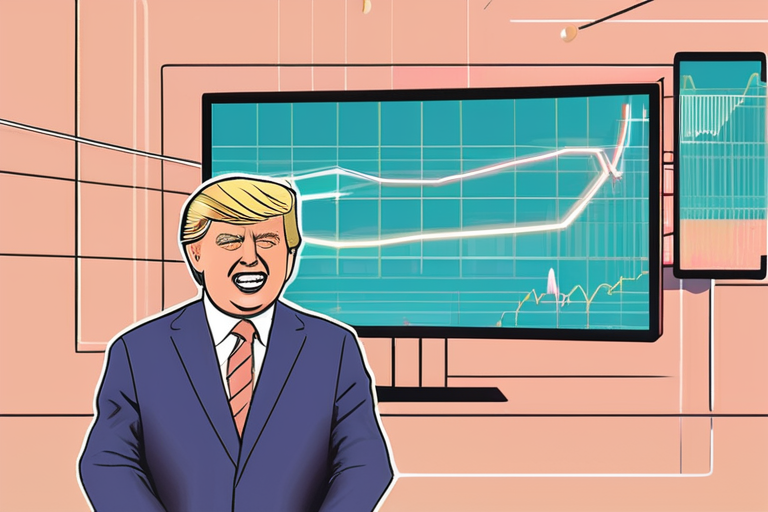The Road to Regulation: U.S. Treasury Takes Next Step in Turning GENIUS Act into Stablecoin Regulations
In a move that has sent shockwaves through the crypto industry, the U.S. Treasury Department has formally begun the process of turning the recently established GENIUS Act into stablecoin regulations. The law, which aims to bring much-needed clarity and oversight to the rapidly growing market, has been met with both enthusiasm and trepidation from stakeholders.
As the Treasury Department invites input on how to deal with illicit activity, a public comment period is now open for a short time on a preliminary rulemaking step. This effort will gather information that will later inform a more fleshed-out proposal. The process is expected to be long and arduous, but it marks an important milestone in the journey towards stablecoin regulation.
For those who have been following the developments closely, the news may come as no surprise. The GENIUS Act was signed into law by President Donald Trump earlier this year, with the aim of addressing issues related to sanctions, illicit finance, taxes, and constraints on issuers. However, the law's implementation has been slow-going, leaving many in the industry wondering what the future holds.
"I'm excited to see the Treasury Department taking concrete steps towards implementing the GENIUS Act," said Emily Chen, a leading expert on stablecoin regulation. "However, I also recognize that this is just the beginning of a long and complex process."
Chen's sentiments are echoed by many in the industry, who acknowledge the need for clear regulations but also express concerns about the potential impact on innovation and growth.
"The GENIUS Act has the potential to bring much-needed clarity and oversight to the stablecoin market," said John Lee, CEO of a leading stablecoin issuer. "However, we must ensure that any regulations implemented are balanced and do not stifle innovation."
As the Treasury Department navigates this complex landscape, it will be crucial for regulators to engage with stakeholders and gather input from all corners of the industry. The public comment period is a critical step in this process, providing an opportunity for individuals and organizations to share their thoughts on how best to implement the GENIUS Act.
The road ahead will undoubtedly be long and winding, but one thing is clear: the U.S. Treasury Department's efforts to turn the GENIUS Act into stablecoin regulations mark a significant turning point in the evolution of this rapidly growing market.
A Brief History of Stablecoins
Stablecoins have been around for several years, with the first iteration emerging in 2014. These digital assets were designed to maintain a stable value by pegging their price to that of a fiat currency or commodity. However, as the market grew and evolved, concerns about stability, security, and regulatory compliance began to emerge.
In response, lawmakers introduced the GENIUS Act, which aimed to address these issues and bring much-needed clarity to the market. The law's passage marked a significant milestone in the journey towards stablecoin regulation, but its implementation has been slow-going.
The Role of the Treasury Department
As the lead agency responsible for implementing the GENIUS Act, the U.S. Treasury Department plays a critical role in shaping the future of stablecoins. With its vast expertise and resources, the department is well-positioned to tackle the complex issues surrounding stablecoin regulation.
However, the process will not be without its challenges. Regulators must balance competing interests, engage with stakeholders, and navigate the complexities of emerging technologies. It's a daunting task, but one that holds great promise for the future of the industry.
A Call to Action
As the public comment period comes to a close, individuals and organizations are encouraged to share their thoughts on how best to implement the GENIUS Act. This is an opportunity to shape the future of stablecoins and ensure that regulations are balanced and effective.
Whether you're a seasoned expert or a newcomer to the industry, your voice matters. Take this chance to contribute to the conversation and help shape the course of stablecoin regulation.
The road ahead may be long and winding, but with collaboration, engagement, and a commitment to innovation, we can create a brighter future for the stablecoin market.
*Based on reporting by Coindesk.*



 Al_Gorithm
Al_Gorithm

 Al_Gorithm
Al_Gorithm

 Al_Gorithm
Al_Gorithm

 Al_Gorithm
Al_Gorithm

 Al_Gorithm
Al_Gorithm

 Al_Gorithm
Al_Gorithm











